The Rise of the IoT Analytics Gateway
Gateway devices at the edge are driving the growth of the Internet of Things (IoT) by connecting sensors and other data-producing objects to the cloud. Through Big Data analytics, this data enables new insights into operations and markets that can lead to dramatic gains in efficiency and productivity, as well as new revenue-generating products and services. Yet despite the IoT’s tremendous potential for delivering these gains and improvements, the enormous amount of edge data is creating challenges.
This article explores the importance of application-ready gateway solutions in providing the necessary input/output (I/O) options, operating systems, security, and reliability for connecting end points to a cloud or data center. We examine the ramifications of collecting so much edge data and discuss the potential role of edge analysis for reducing latency and data movement, storage, and analysis costs. We look at the analytics gateway, a new product that meets enterprise needs and enables near-real-time, data-driven decisions at the edge for improved system automation (Figure 1). We then present two use cases that demonstrate the utility and value of these new gateways.
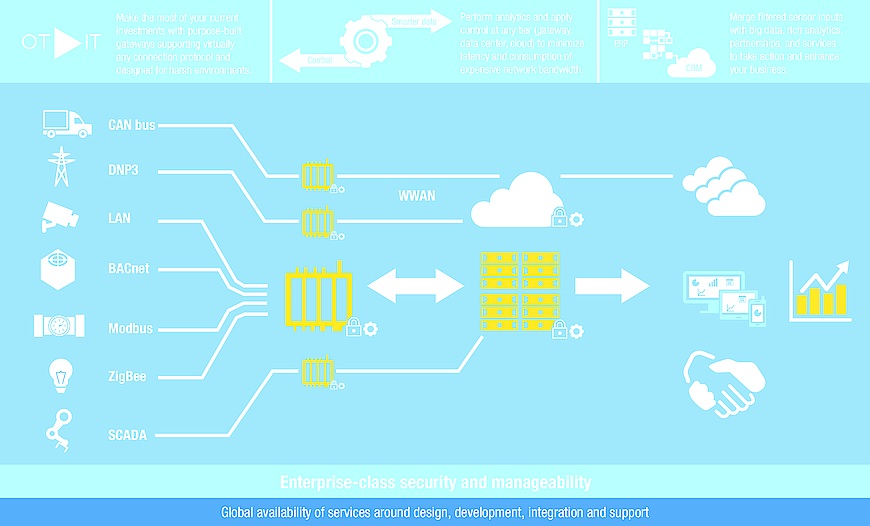
Figure 1. This diagram shows where analytics gateways function in Dell’s distributed IoT architecture.
Data Challenges Facing the IoT
The tremendous amounts of structured and unstructured data available at the edge are exposing a critical gap in the IoT: Businesses face staggering costs to store and process all this data.
In its 2015 “Smart Systems Forecast Model,” Harbor Research estimates that by 2020 smart systems will create over 194 petabytes (PB) of data. That’s 194,000 terabytes (TB). Other research suggests even more data is coming. A 2015 IDC report, “Internet of Things Mid-Year Review,” predicts that the number of IoT end points added with gateways or other solutions per minute will increase to more than 7,900 in 2020 from 4,500 in 2015. That adds up to 4 billion end points in a year, each potentially streaming data constantly to a data center or cloud.
The IoT Analytics Gateway
To make collecting all this data tenable, we need solutions that filter data at the gateway so that only the fraction that needs more advanced processing goes to the cloud. A new generation of devices – analytics gateways – provides the necessary intelligence to perform edge filtering, analytics, and data compression in near-real time. These gateways are small devices offering wired and wireless connections to collect, secure, and process sensor data at the edge.
Serving as a digital bridge and translator between the physical world of operations technology (OT) and cloud infrastructure, analytics gateways enable organizations to achieve several key objectives:
- Better utilization of network bandwidth resources
- Decreased data center (or cloud) processing and storage costs
- Lower latency at the edge
- Faster reaction times for automated edge functions
The distributed IoT architecture that results from using these analytics gateways enables the placement of more real-time, data-driven functions close to the data source. This improves operational efficiency.
Anatomy of an Analytics Gateway
To help simplify the intricacies involved in collecting and processing edge data, Dell has developed the Dell Edge Gateway 5000 Series for IoT. Designed for building and factory automation sectors, the Dell Edge Gateway 5000 Series allows organizations to locally analyze and act on edge data from disparate devices and sensors – even in extreme environments (Figure 2). This local analysis ensures only meaningful data is sent to a data center or cloud, saving the cost and bandwidth of transmitting and centrally storing every unprocessed data set. With expanded I/O and support for diverse communications protocols through certified independent software vendor (ISV) middleware, the Dell Edge Gateway 5000 Series helps connect, extract, and analyze data from both legacy and modern systems.
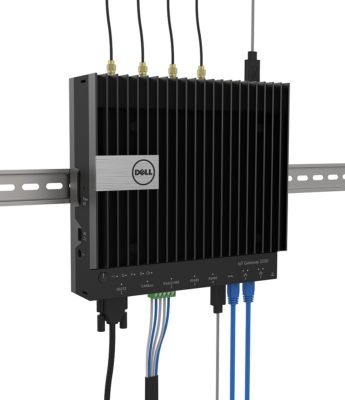
Figure 2. The Dell Edge Gateway 5000 Series performs local IoT analytics and filtering applications in extreme environments.
The rugged device employs a fanless, small form factor, solid-state design with no moving parts for 24/7 operation. Operating system choices include Wind River* Linux*, Ubuntu Snappy Core*, and Microsoft Windows* 10 IoT Enterprise. Mounted on a wall or DIN rail at the network edge, the gateway delivers a long life in the extended temperatures, high humidity, and dust typical of industrial environments.
To cover the entire product lifecycle, Dell offers a complete service package for the Dell Edge Gateway 5000 Series – including Basic Hardware Support and ProSupport. Through Dell’s Configuration Service, customers can order application-ready gateways configured to their specifications, including custom BIOS settings and factory installation of the software image.
An expanded range of I/O and communications protocols enable connection to industry-standard systems, modern sensors, and new devices entering the market (Figure 3). Combined with middleware solutions from Dell-certified ISV partners, virtually any data source can be aggregated and normalized. Sources can range from BACnet*, Modbus, and CAN bus to modern wireless mesh networks like ZigBee, 6LoWPAN, and Z-Wave.
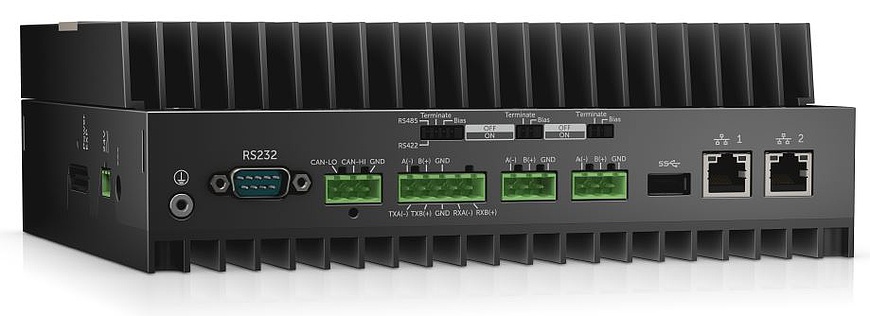
Figure 3. The Dell Edge Gateway 5000 Series provides expanded I/O.
Security is addressed through a Trusted Platform Module (TPM) chip that enables a hardware root of trust, secure boot, and BIOS-level lockdown of unused I/O ports. Additional security best practices are available from Dell that help minimize the attack surface and protect data in motion and at rest.
The Processing Power Inside
Essential to the Dell Edge Gateway 5000 Series’ local analytics and filtering capabilities is its choice of Intel® processors. The gateways offer a choice of the Intel® Atom™ processor E3825 running at 1.46 GHz or the Intel® Atom™ processor E3827 running at 1.75 GHz. Each includes two powerful cores for processing data.
Intel’s first system-on-chip (SoC) design, the Intel® Atom™ processor E3800 product family makes an excellent choice for small form factor designs with low power consumption. These processors deliver up to three-times-higher performance and consume as little as one-fifth the power of the previous generation. With extended temperature support and BGA packaging, these processors are ready for duty in rugged applications and harsh environments.
The SoCs’ integration of I/O interfaces is extensive. The processors support industry-standard embedded I/O, multiple storage types, and expansion capabilities through industry-standard high-bandwidth interfaces such as PCI Express Gen 2.0, Hi-Speed USB 2.0, and USB 3.0. In addition, their integrated graphics and support of common display interfaces make them ideal for gateway applications requiring human-machine interfaces (HMIs).
For applications requiring secure, always-on connectivity for critical infrastructure and operations requiring near real-time performance, the Intel Atom processor E3800 product family works well with virtualization solutions. The processors include Intel® Virtualization Technology (Intel® VT), which makes virtualization practical in small devices by providing a hardware assist that reduces performance overhead.
Further optimization comes from the Intel® Advanced Encryption Standard New Instructions (Intel® AES-NI) available in these processors. Enabling hardware-assisted data encryption and decryption, Intel AES-NI reduces the overhead of encryption solutions that secure moving data and data at rest.
Proven in the Field
Before Dell launched the Dell Edge Gateway 5000 series, they tested analytics gateways in a proof of concept (PoC) program. One PoC involved ELM Energy, a company that monitors and manages power transmission to critical work sites ranging from mines to data centers. The company wanted their Fieldsight* Microgrid Monitoring and Control solution to react more rapidly to changes in power requirements. This is particularly important when optimizing and balancing power generation to make maximum use of renewables. Fieldsight performs this balancing and improves power reliability by helping reduce grid instability, managing demand against supply, and enabling demand-response program participation.
The ELM Energy PoC involved multiple power sources such as solar, battery, and generator. An early Dell analytics gateway design provided a local automation solution for transferring the flow from one energy source to another as output from the different systems changed (Figure 4). Solar power, for example, fluctuates based on available sunlight. As solar output decreases, the system needs to sense this decrease and either pull energy from battery storage or increase generator output.
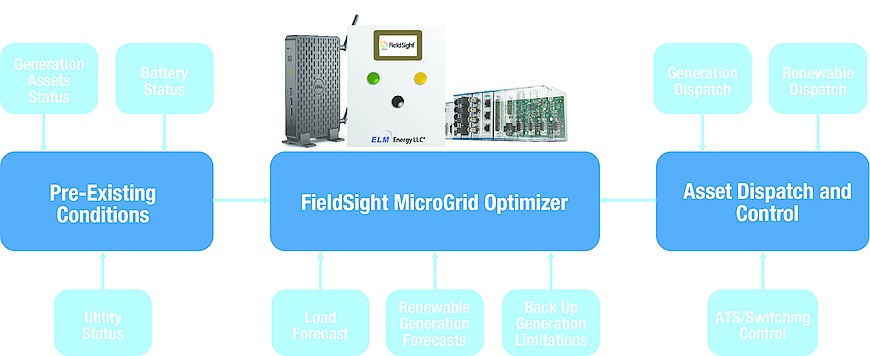
Figure 4. In the PoC, Dell’s analytics gateway (black box) provided ELM Energy with a local automation solution for balancing the output of different energy sources.
Sending the raw energy data to a centralized system such as a cloud affected the speed and reliability of the solution, making it difficult to meet customer requirements. Dell’s analytics gateway automated these energy decisions locally in near-real time to prevent customer power disruptions. The gateways also transferred filtered data to cloud-hosted software so that customers could generate reports, view historical and current data, and perform further analytics using a software-as-a-service (SaaS) application.
Another Dell PoC involved Intel and KMC Controls, a leader in building automation systems. In this case, Dell and Intel helped KMC Controls launch the KMC Commander Internet of Things Platform for Building Automation. The solution earned the Best Intelligent Building Technology Innovation Award at the 2015 Realcomm IBcon conference.
KMC Commander uses a Dell Edge Gateway 5000 Series to enable an end-to-end solution from sensors and controllers (edge devices) to cloud-based remote management applications. The solution allows tenants to access a cloud-hosted, secure, mobile application to adjust building operations to optimize comfort, utilization, and efficiency (Figure 5).
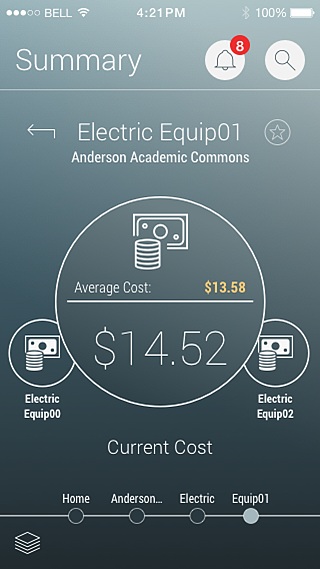
Figure 5. The KMC Commander uses the Dell Edge Gateway 5000 Series as part of an end-to-end solution putting building operation controls into tenants’ hands.
The Dell Edge Gateway 5000 Series cost-effectively moves data from the building to the cloud, while also enabling local analysis. Sending only pertinent, long-term data to the cloud reduces the cost and complexity of handling edge data. By extracting meaningful information from legacy systems, the gateways help building owners extend the life of those investments and project the potential savings of new equipment purchases.
For this solution, the Dell Edge Gateway 5000 Series used Wind River Linux, Intel® Security software (with engineering and design support from Dell OEM), and a data tagging and visualization framework from J2 Innovations. Multiple protocol drivers (such as BACnet and Modbus) provided access to existing building networks to acquire data on building system performance. Open APIs to the cloud and to KMC Commander BX* hardware provided opportunities for advanced customization, third-party development, and the addition of enhanced equipment and control routines.
A Smarter Gateway to IoT Opportunities
The Dell Edge Gateway 5000 Series is an excellent example of an IoT analytics gateway designed to provide intelligence and security at the edge for near-real-time, data-driven decisions. Enterprises can use these gateways to decrease latency, reduce network traffic, lower cloud storage and processing costs, and achieve a higher degree of system automation.